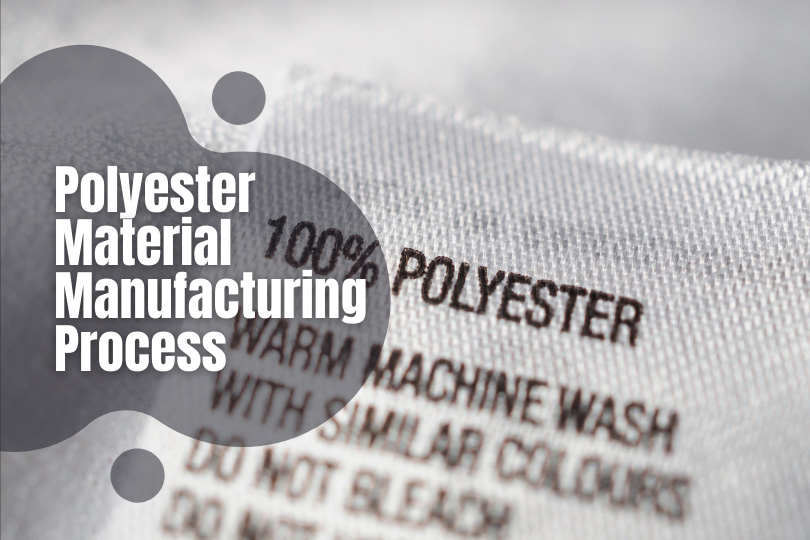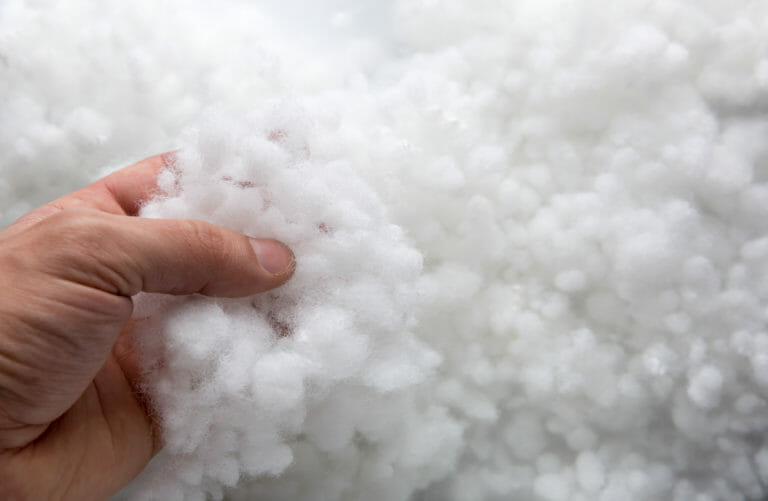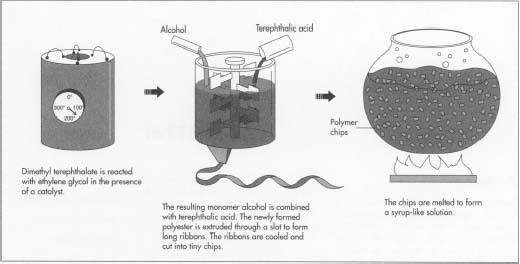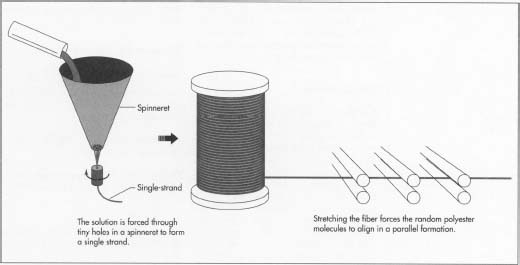You may have heard the term polyester material, but do you know how it is made? On this occasion, we will discuss how the process of polyester material is made and its application in our daily lives.
The Early History of Polyester
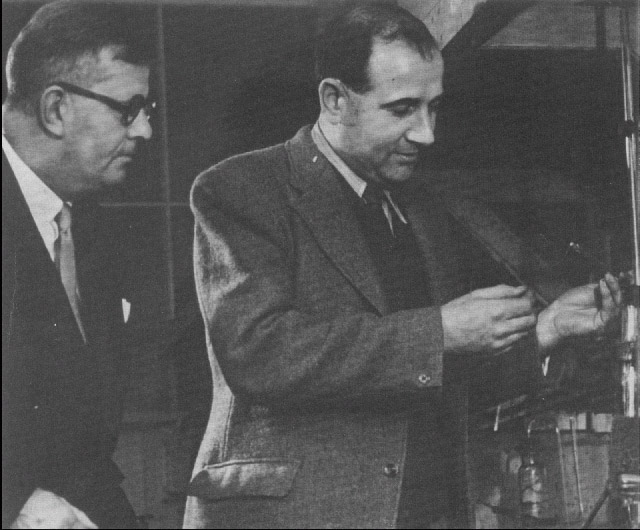
At first polyester fabric is the result of the development of ethylene. In 1926, a chemist named W.H Carothers in England discovered the material Terylene. This material then continued to be developed between the 1930s – 1940s to find better ethylene fabrics. And these efforts eventually caught the interest of American investors and innovators.
It was first discovered in 1941 by British chemists John Rex Whinfield and James Tennant Dickson and became increasingly popular in the 1970s.
A group of British scientists applied for Caruthers’ work in 1941 and created the first commercial polyester fiber in 1941 called Terylene. DuPont bought the legal rights in 1946 and created another polyester fiber: Dacron, as we know it today. Eastman Chemical created another polyester fiber in 1958 called Kodel.
The polyester fabric market is growing rapidly, including in the late 70s the ubiquitous double knit polyester pants, casual wear, golf pants, and other fashion clothing.
Characteristics of Polyester Material
There are special characteristics of polyester materials that can be distinguished from other types of materials. Following are its characteristics:
- Polyester fiber is very strong so it is durable and resistant when used for a long time.
- Polyester is made of plastic so the fabric dries faster
- It doesn’t wrinkle easily so it doesn’t need to be ironed.
- Able to withstand body heat so it is more suitable for winter wear.
How Polyester is Made?
Polyester is a chemical term that can be broken down into poly, which means many, an ester, a basic organic chemical compound. The main ingredient used in the manufacture of polyester is ethylene, which is derived from petroleum. In this process, ethylene is a polymer, the chemical constituent of polyester, and the chemical process that produces the final polyester is called polymerization.
Polyester Manufacturing Process
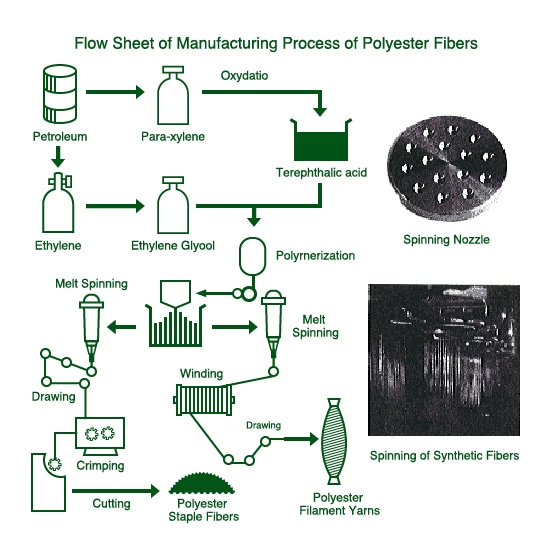
Polyester is produced by one of several methods. Which is used depends on the shape of the polyester to be made. The four basic forms are filament, staple, tow, and fiberfill. In filament form, each individual strand of polyester fiber is continuous in length, resulting in a fabric with a smooth surface.
In the staple form, the filament is cut short to a predetermined length. In this form, polyester blends more easily with other fibers. A tow is a form in which continuous filaments are pulled loosely together. Fiberfill is a thick form used in the manufacture of blankets, pillows, and outerwear. The two most commonly used forms are filament and staple.
Filament Yarn Manufacturing
1. Polymerization
- To form polyesters, dimethyl terephthalate is first reacted with ethylene glycol in the presence of a catalyst at 302-410 °F (150-210 °C).
- The resulting chemical, a monomeric alcohol (single molecule, not repeating), is combined with terephthalic acid and raised to 472°F (280°C). The newly formed polyester, which is clear and liquid, is extruded through the slots to form a long ribbon.
2. Drying
After the polyester emerges from polymerization, the long molten ribbon is allowed to cool until it becomes brittle. The ingredients are cut into small pieces and dried completely to prevent irregularities in the consistency.
3. Melt Spinning
The polymer chips are melted at 500-518°F (260-270°C) to form a syrup-like solution. The solution is fed into a metal case called a spinneret and pushed through its pinhole, which is usually round, but maybe pentagonal or other shapes to produce special fibers. The number of holes in the spinneret determines the size of the yarn, as the emerging fibers are brought together to form a single strand.
In the spinning stage, other chemicals can be added to the solution to make the resulting material flame retardant, antistatic, or easier to color.
4. Fiber Withdrawal
When the polyester comes out of the spinner, it becomes soft and easily stretches up to five times its original length. Stretching forces random polyester molecules to align in parallel formations. This increases the strength, ductility, and resilience of the fiber. This time, as the filament dries, the fibers become dense and strong, not brittle.
The stretched fibers can vary greatly in diameter and length, depending on the desired characteristics of the finished material. Also, when the fibers are pulled, they may be textured or twisted to create a softer or duller fabric.
5. Twisting / Winding
Once the polyester yarn is pulled, it is wrapped in large bobbins or flat-wound packages, ready to be woven into the material.
Staple Fiber Manufacturing
In the manufacture of polyester staple fiber, polymerization, drying, and melt spinning are almost the same as for the manufacture of filament yarn. However, in the melt spinning process, the spinneret has more holes when the product is a staple fiber. The emerging rope-like polyester bundle is called a tow.
1. Tow Withdrawal
The newly formed tow is quickly cooled in a can that collects the thick fibers. Several towing lengths are collected and then pulled on heated rollers to three or four times their original length.
2. Crimping
The pulled tow is then fed into a compression box, which forces the fibers to fold like an accordion, at a rate of 9-15 wrinkles per inch (3-6 per cm). This process helps the fibers stick together during later manufacturing stages.
3. Setting
After the tow is crimped, it is heated to 212-302°F (100-150°C) to completely dry the fibers and set the wrinkling. Some crimp will inevitably be pulled out of the fiber during the following process.
4. Cutting
After setting the heat, the tow is cut into shorter lengths. The polyester to be blended with the cotton is cut into 1.25-1.50 inches (3.2-3.8 cm) pieces; for the rayon mixture, cut into 2-inch (5 cm) lengths. For heavier fabrics, such as carpets, the polyester filament is cut 6 inches (15 cm) long.
Uses of Polyester Material
- Clothing: Polyester is used in the process of making t-shirts, suits, shirts, jackets, socks and underwear.
- Home Appliances: Polyester is also used in the manufacture of towels, blankets, curtains, fabrics for sofas and pillows
- Industrial Applications: LCD Screens, Hologram Films, ship screens to bottle making.
Current Development of Polyester
Consumers today are demanding better materials. And technological innovation continues to improve polyester fibers and fabrics through:
- Improvements in resin production (usually a closely guarded trade secret);
- Changing the shape of the spinner, which changes the shape and feel of the fibers
- Stretches polyester fiber beyond five times its original length
- crimping Polyester fibers to create more texture and mass for insulation and elasticity
- Various additives that change the shine of polyester fabrics, increase color resistance, enhance curtains, and more; and manufacture of microfiber, a very fine about 1/100th the diameter of human hair used in all types of fabrics and clothing (and many other application)
Conclusion
After being introduced to the United States in 1951, polyester quickly became the fastest-growing fabric fiber in the country. The easy-care of permanent press fabrics made polyester double crochet very popular in the late 1960s. However, polyester has experienced “image problems” ever since, and clothing made from polyester is often belittled and even ridiculed.
Several new forms of polyester introduced in the early 1990s can help revitalize the image of polyester. A new form of polyester fiber, called microfiber, was introduced to the public in 1991. More luxurious and versatile than traditional polyester, microfiber fabrics are difficult to distinguish from silk fabrics. Clothing designers such as Mary McFadden have created clothing lines using this new form of polyester.
Textile researchers at North Carolina State University are developing a form of polyester that may be as strong as Kevlar, the super fiber material used to make bulletproof vests. This type of polyester could eventually be used as a composite material for cars and airplanes.
To be honest, people today are more interested in the look, texture, and price of fabrics and clothes than in what kind of material is used. The increased quality of the polyester material coupled with the “Say Yes to polYESter” marketing campaign resulted in the return of a previously underestimated material.
Related Article: Types and Materials of Polo Shirts
